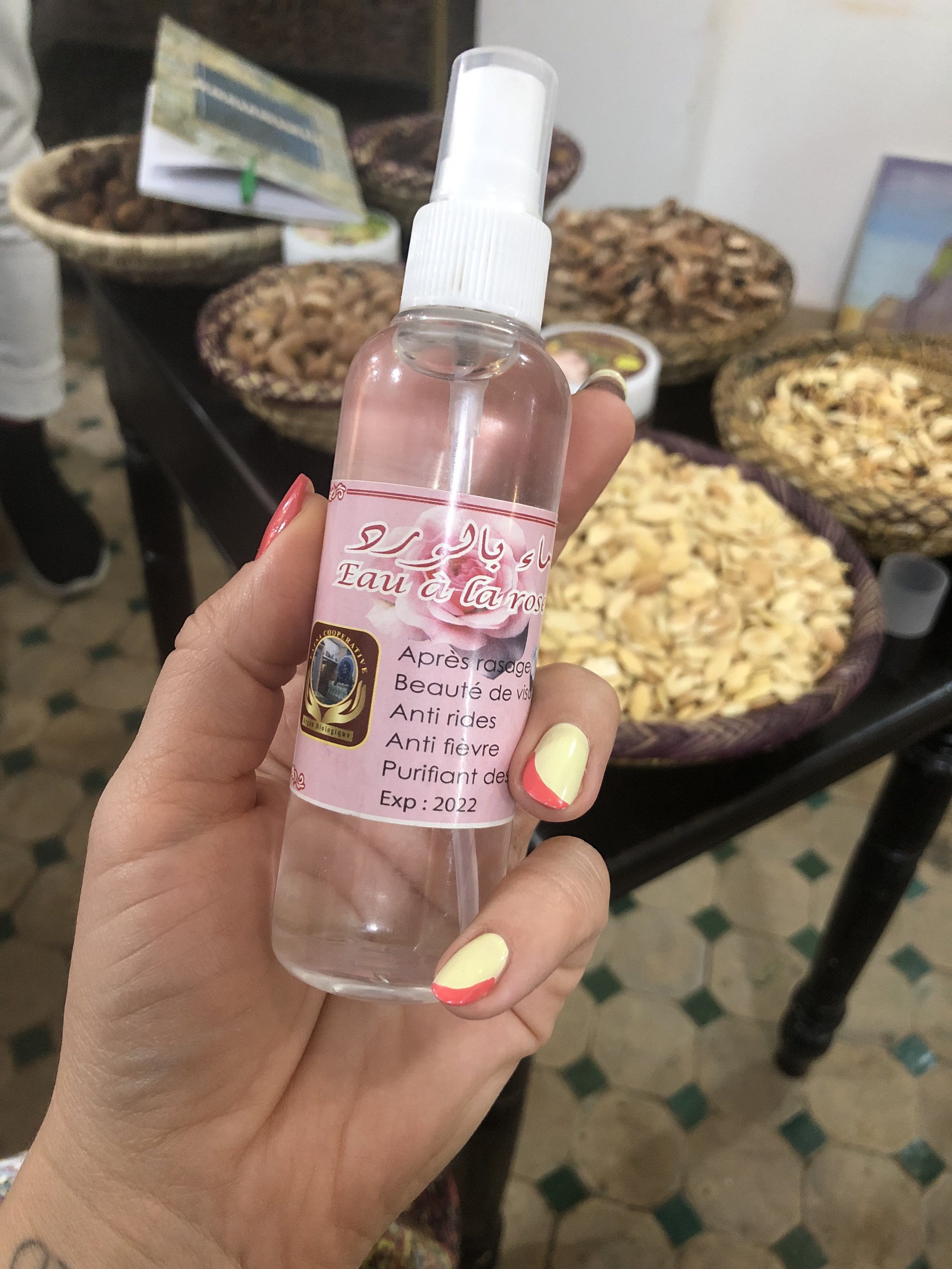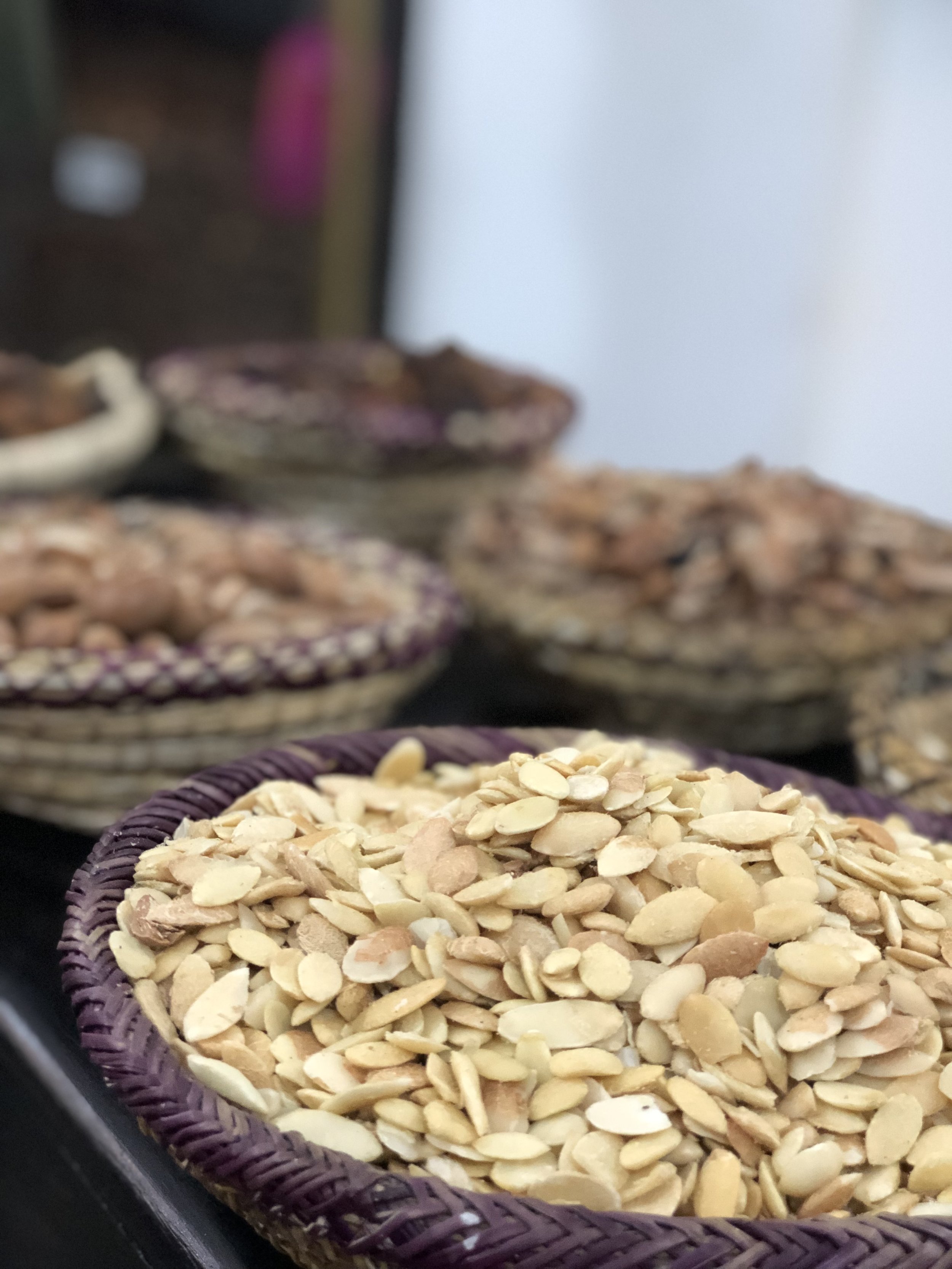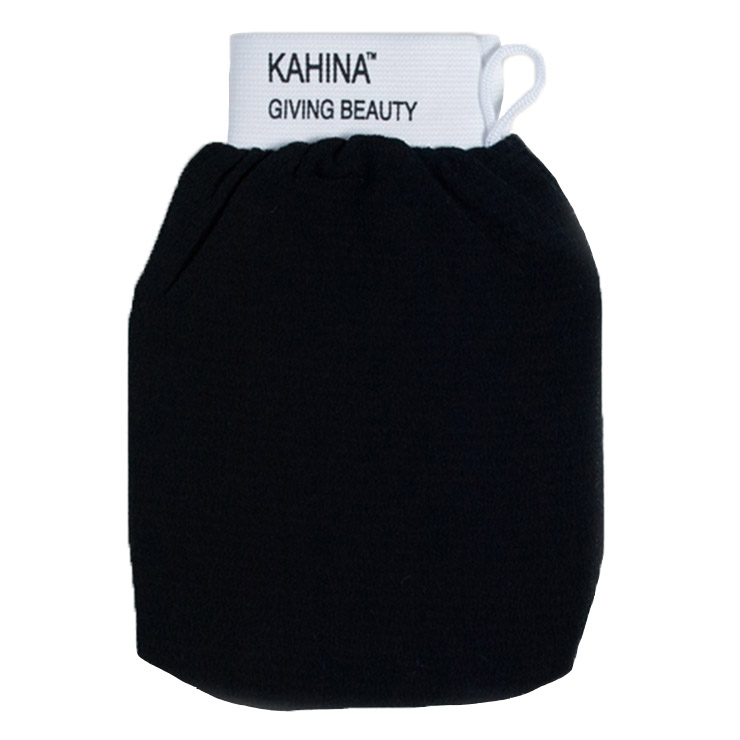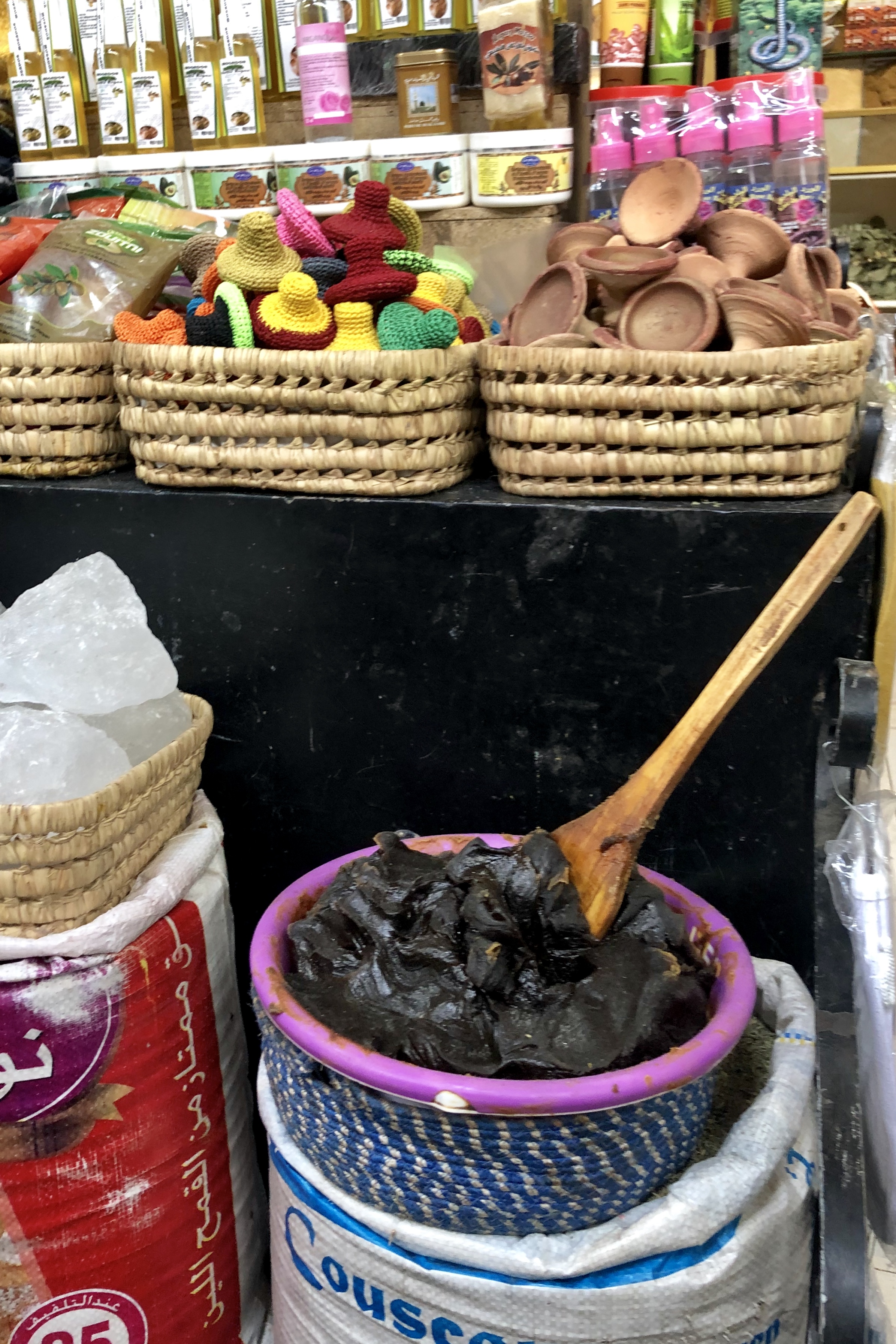Top 5: Beauty Products you Need to Bring Back from Morocco
At a Hammam at the Es Saadi Hotel in Marrakesh. On my skin and in my hands is Beldi Soap - its softening our skin as we are (supposed to be) relaxing in the terracotta sauna.
I just returned from an all-female, positively life-altering trip to Morocco with Visit Morocco and Around the World Beauty and wanted to race to tell you about the treasure trove of beauty products that awaited us in Marrakech! The founder, Stephanie Flor is a serious beauty expert and she told us all about beauty life in Morocco, rituals that date back centuries, and of course, the major beauty players in this North African country.
The geographic location of Morocco (aka climate and lands) makes it a hub of natural beauty products. It was difficult to choose, but I narrowed them down to my top 5:
5. Rose Water / Rose Oil
The most common product used by Moroccan women is rose oil or rose water. Mmmmm! The nutrients are extracted from fresh rose petals and it plays a vital role in soothing the skin that is suffering from many skin issues. Additionally, it leaves the skin soft and glowy - not to mention the aromatherapy benefits of easing migraines, cramps, and depression. Smell like roses, and feel like a million bucks? I’ll take a dozen please.
4. Indigo
Walking around Morocco, there is no shortage of bright cobalt/indigo blue - in fact, it is THE official color of Morocco. Its also one of the only natural dyes used today - many are synthetic (I know). It’s extracted from the shrub Indigofera tinctoria, it is found throughout tropical regions across the world and is a predominant export from Morocco. The dye can be used to color textiles, to paint with, color hair with, or just be proud that you brought something “authentic” back from Morocco :)
3. Argan Oil
Argan oil is legendary across the world for its many beneficial properties.Made from an argan tree's kernel that is native to Morocco, it is a common hair regiment essential oil. So naturally, the highest quality Argan oil can be found in (you guessed it) Morocco! It can be used like a hair mask before washing your hair to increase elasticity - aka lessen breakage. On top of that (is that a pun?) many women use it to moisturize or minimize wrinkles. If you’re looking to gift someone something extra Mo-rockin (see what I did there?) Argan oil is it.
2. Beldi Soap + Kessa Mitts
The most known beauty ritual in Morocco, Flor says, are the “hammams” (bathhouses) of Morocco. Hammams can be public or private and are an important part of daily life in Morocco. A key component of the hammam ritual is first, cleansing and softening the skin with Beldi Soap (a natural soap that is made up of 100 percent virgin black olive oil). It’s followed up by a thorough, thorough exfoliation, head to toe, with the Kessa Mitt.
Kessa mitts are made from a unique tissue which removes old skin cells and surplus oil from the skin, at the same time giving you a revitalizing massage (work in strokes towards your heart). Beldi soap can be applied on the entire body solo, but I recommend using it hand-in-hand (ha) with a Kessa message glove for max results.
Kessa mitts. like nail files, come in different abrasives too. So if you find yourself getting a scrub down at a bathhouse, ask if they have a gentler version (and yes, I learned the hard way).
1. Rhassoul Clay
Rhassoul Clay is a Moroccan clay that is used most commonly used in Hammams, where women are supposed to wrap their bodies and wait for 15 minutes before washing it off. The Ghassoul word in Arabic means "that washes". Its high mineral content makes it an ideal toning treatment for the whole body. The rhassoul is hypoallergenic so it’s extremely soft to the skin and suitable for all skin types, even the most fragile. For the Moroccan, it is custom to offer it as a wedding gift. At the traditional hammams, the rhassoul is applied after the exfoliation step with the Kessa Mitt.
Your Plus 1:
Henna!
Oh, how I love you! A mehendi artist for 10 years pre-NYC life, henna has always had a huge place in my heart, and why I couldn’t leave it out of my list. However, bringing back pre-made henna paste to use as body art isn’t the best thing to do. Why? Pre-made henna loses its staining abilities fast, it can have additives in it that you could be allergic to (some essential oils are added to allow for a deeper stain) or dyes NOT okay for your skin, and it needs to stay refrigerated.
Instead, pick up henna powder. Made from the dried leaves of the henna plant (Lawsonia Inermis), you can mix it yourself at home - just keep the powder in the freezer until ready to mix. I could go on for days about henna and how to mix it to let the dye release - but I’ll just link you to this recipe (just add lavender, like I used to do :) or Catherine Cartwright-Jones, PhD, who was my teacher, instead.
Henna is used by Moroccan women to beautify their hands with unique and beautiful designs. Furthermore, they also use it as a hair mask, which makes their hair shine along with giving it strength and thickness.
Morocco isn’t all delicious tangines and phenomenal sunsets (although there are PLENTY of those too!) so if you find ourself in Morocco, be sure to stock up on these best-of-the-best beauty products!
What’s YOUR top Moroccan beauty pic? Sound off in the comments below!I’d love to know what you think of my picks.
xoxo
Julie








